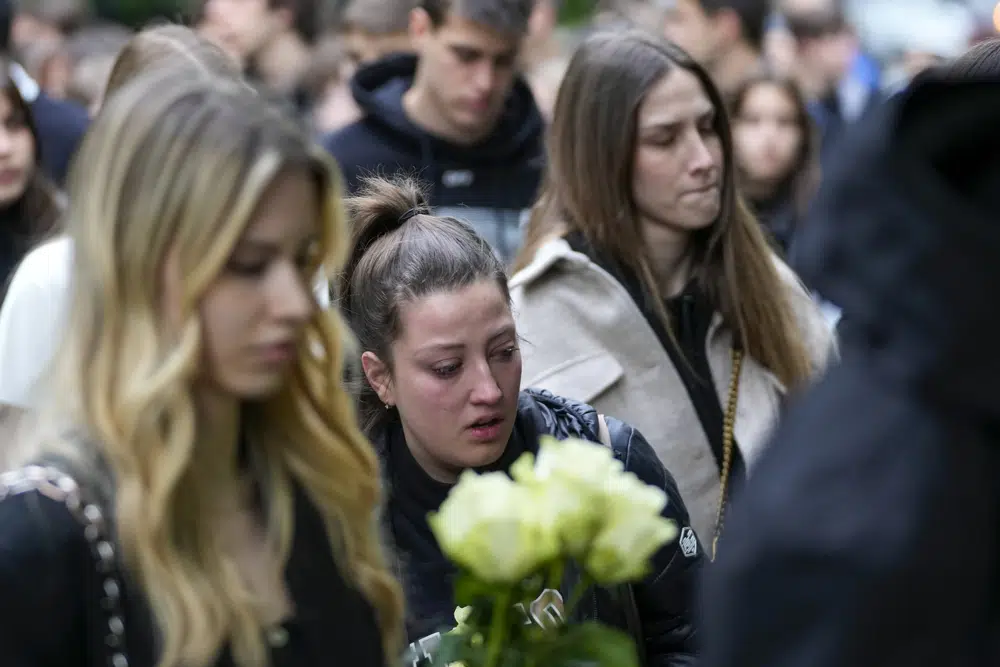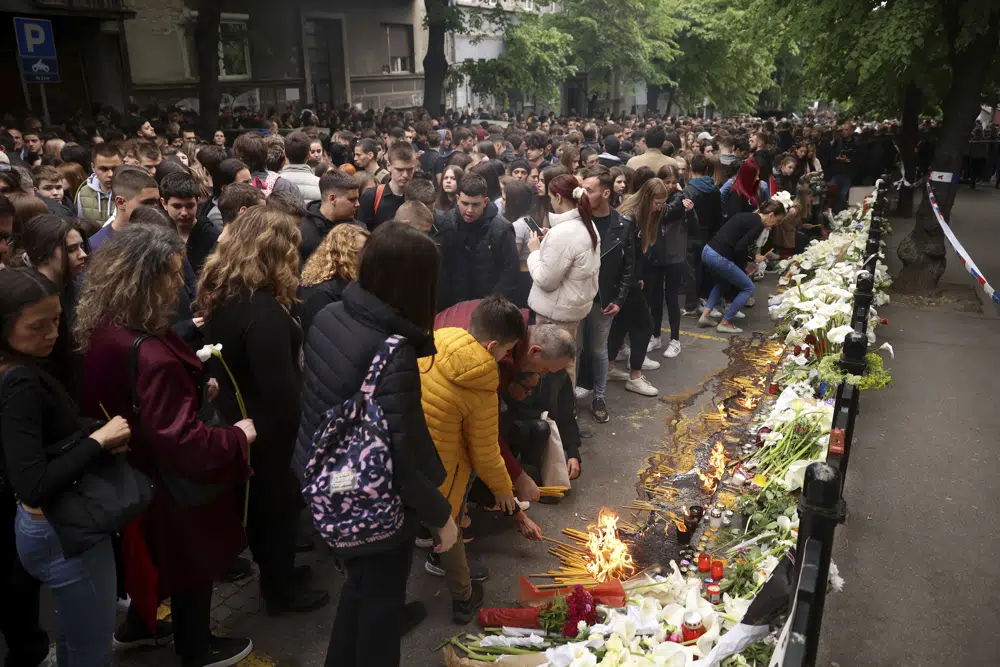State media reported early Friday, May 5, 2023, that a shooter killed at least eight people and wounded 13 in a drive-by attack late Thursday in Serbia’s second such mass killing in two days.
The attacker shot randomly at people in three villages near the town of Mladenovac, about 50 kilometers (30 miles) south of the capital.
Hundreds of police were searching for a 21-year-old suspect, who fled after the attack, the report said.
The shooting came a day after a 13-year-old boy used his father’s guns to kill eight fellow students and a guard at a school in Belgrade. The shooting on Wednesday, May 3, 2023, morning in Vladislav Ribnikar primary school also left seven people hospitalized, six children and a teacher. One girl who was shot in the head remains in life-threatening condition, and a boy is in serious condition with spinal injuries.
Authorities have said the Wednesday shooter, whom police identified as Kosta Kecmanovic, is too young to be charged and tried. He has been placed in a mental institution, while his father has been detained on suspicion of endangering public security because his son got hold of the guns.
Though Serbia is awash with weapons left over from the wars of the 1990s, Wednesday’s school shooting was the first in the country’s modern history. The last mass shooting before this week was in 2013, when a war veteran killed 13 people in a central Serbian village.
The bloodshed sent shockwaves through a Balkan nation which has been scarred by wars, but unused to mass murders.
“A Terrorist Act”
Serbian Interior Minister, Bratislav Gasic called the drive-by shootings “a terrorist act,” state media reported.
Hundreds of special police and helicopter units, as well as ambulances, were sent to the area, which has been sealed off as police search for the attacker. No other details were immediately available, and police had not issued a statement.
The Minister of Health, Danica Grujičić, and the Head of the Security Intelligence Agency, Aleksandar Vulin, reportedly travelled to the area in the early hours of Friday.
Before the attack, Serbia spent much of Thursday reeling from its first mass shooting in ten years. Students, many wearing black and carrying flowers, filled streets around the school in central Belgrade as they paid silent homage to slain peers.

Serbian teachers’ unions announced protests and strikes to warn about a crisis in the school system and demand changes. The same day, authorities moved to boost gun control, as police urged citizens to lock up their guns and keep them away from children.
The government ordered a two-year moratorium on short-barrel guns, tougher control of people with guns and shooting grounds, and tougher sentences for people who enable minors to get hold of guns.

A registered gun owner in Serbia must be over 18, healthy, and have no criminal record. Weapons must be kept locked and separately from ammunition.
Gun culture is widespread in Serbia and elsewhere in the Balkans. The region has among the highest numbers of guns per capita in Europe. Guns are often fired into the air at celebrations and the cult of the warrior is part of national identities.
Experts have repeatedly warned of the danger posed by the number of weapons in the highly divided country, where convicted war criminals are glorified and violence against minority groups often goes unpunished. They also note that decades of instability stemming from the conflicts of the 1990s, as well as ongoing economic hardship, could trigger such outbursts.







